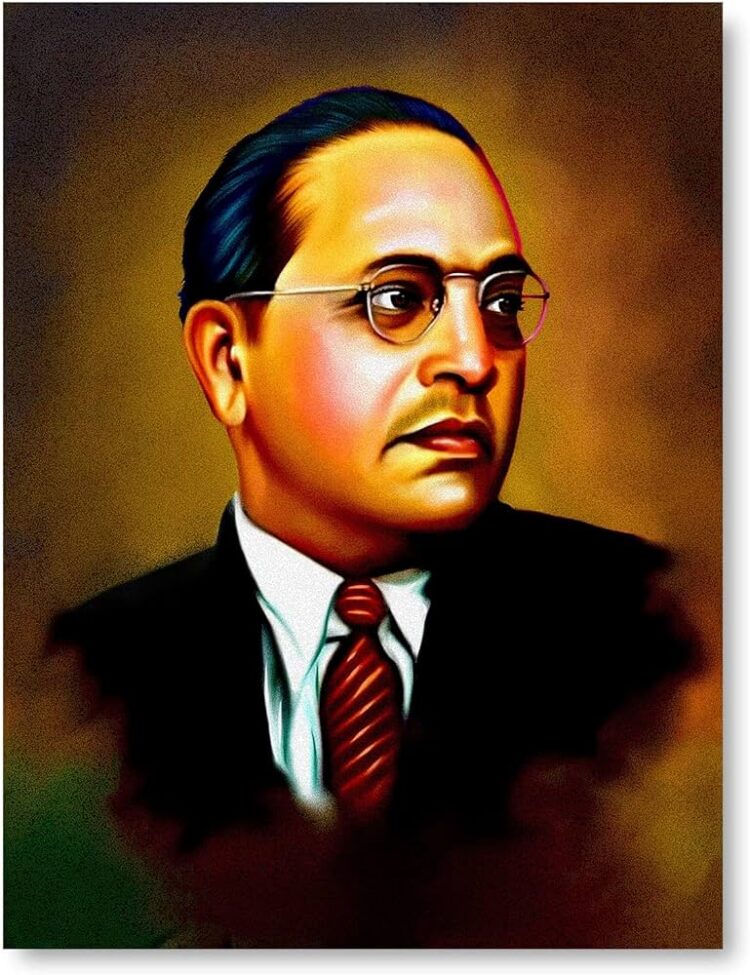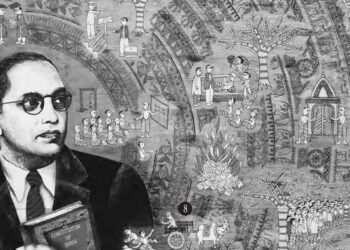I
The reader is now aware that in the Scheme of Manu there were two principal social divisions: those outside the Chaturvarna and those inside the Chaturvarna. The reader also knows that the present day Untouchables are the counterpart of those outside the Chaturvarna and that those inside the Chaturvarna were contrasted with those outside. They were a composite body made up of four different classes, the Brahmins, the Kshatriyas, the Vaishyas and the Shudras. The Hindu social system is not only a system in which the idea of classes is more dominant than the idea of community but it is a system which is based on inequality between classes and therefore between individuals. To put it concretely, the classes i.e. the Brahmins, Kshatriyas, Vaishyas, Shudras and Antyajas (Untouchables) are not horizontal, all one the same level. They are vertical i.e. one above the other. No Hindu will controvert this statement. Every Indian knows it. If there is any person who would have any doubt about it he can only be a foreigner. But any doubt which a foreigner might have will be dissolved if he is referred to the law of Manu who is the chief architect of the Hindu society and whose law has formed the foundations on which it is built. For his benefit I reproduce such texts from the Manu Smriti as go to prove that Hindu society is based on the principle of inequality.
II
It might be argued that the inequality prescribed by Manu in his Smriti is after all of historical importance. It is past history and cannot be supposed to have any bearing on the present conduct of the Hindu. I am sure nothing can be greater error than this. Manu is not a matter of the past. It is even more than a past of the present. It is a ‘living past’ and therefore as really present as any presence can be.
That the inequality laid down by Manu was the law of the land under the pre-British days may not be known to many foreigners. Only a few instances will show that such was the case.
Under the rule of the Marathas and the Peshwas the Untouchables were not allowed within the gates of Poona city, the capital of the Peshwas between 3 p.m. and 9 a.m. because, before nine and after three, their bodies cast too long a shadow; and whenever their shadow fell upon a Brahmin it polluted him, so that he dare not taste food or water until he had bathed and washed the impurity away. So also no Untouchable was allowed to live in a walled town; cattle and dogs could freely enter but not the Untouchables1.
Under the rule of the Marathas and the Peshwas the Untouchables might not spit on the ground lest a Hindu should be polluted by touching it with his foot, but had to hang an earthen pot round his neck to hold his spittle. He was made to drag a thorny branch of a tree with him to brush out his footsteps and when a Brahman came by, had to lie at a distance on his face lest his shadow might fall on the Brahman2.
In Maharashtra an Untouchable was required to wear a black thread either in his neck or on his wrist for the purpose of ready identification.
In Gujarat the Untouchables were compelled to wear a horn as their distinguishing mark3.
In the Punjab a sweeper was required while walking through streets in towns to carry a broom in his hand or under his armpit as a mark of his being a scavenger4.
In Bombay the Untouchables were not permitted to wear clean or untorn clothes. In fact the shopkeepers took the precaution to see that before cloth was sold to the Untouchable it was torn & soiled.
In Malabar the Untouchables were not allowed to build houses above one storey in height5 and not allowed to cremate their dead6.
In Malabar the Untouchables were not permitted to carry umbrellas, to wear shoes or golden ornaments, to milk cows or even to use the ordinary language of the country.7
In South India Untouchables were expressly forbidden to cover the upper part of their body above the waist and in the case of women of the Untouchables they were compelled to go with the upper part of their bodies quite bare.8
In the Bombay Presidency so high a caste as that of Sonars (gold-smiths) was forbidden to wear their Dhoties with folds9 and prohibited to use Namaskar as the word of salutation10.
Under the Maratha rule any one other than a Brahmin uttering a Veda Mantra was liable to have his tongue cut off and as a matter of fact the tongues of several Sonars (goldsmiths) were actually cut off by the order of the Peshwa for their daring to utter the Vedas contrary to law.
____________________________
1 Dr.Murray Mitchell-Great Religions of India. P.63
2 Bombay Gazetteer. Vol.XII. p.175.
3 Ency R. &. E. Vol.IX p.636(b).
4 Punjab Census Report 1911 p.413.
5 Bhattacharya-p.259.
6 Madras Census 1891. p.299
7 Bhatacharya-Hindu Castes-p.259.
8 Madras Census 1891 p.224
9 This mode of wearing dhoties was referred for Brahmins only. The Shudras were to wear it without folds.
10 The following letter will be interesting to the reader as it throws a flood of light as to whether the Dhanna prescribed by Manu was or was not the law of the land.








